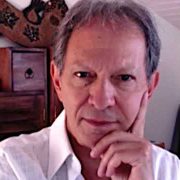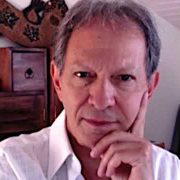What’s stress? We’ve needed an answer to this question for decades, but it isn’t simple. In fact, it involves consciousness, the organism, and the context. So, does stress mean feeling tired, overwhelmed, or lacking in strength?
To answer, we must first make a distinction between the concept of stress and activation. Activation is a requirement for every living being, it’s the spark of life. But, is being stressed the same as being activated?
Stress
Doctor Hans Selye claimed that stress is a non-specific response that the body emits to any stimulus. For him, the objective of stress was adaptation. Today, we know that certain doses of low-intensity stress in everyday life act as a vaccine against extremely intense stressors. However, if these small doses of stress are accentuated and prolonged, they cause problems.
In this sense, there are two variables to take into account: the intensity and duration of the stressor.
The general adaptation syndrome
Hans Selye claimed that stress is a response that goes through several stages:
1. Alarm reaction
This happens when we see a stressor, such as a threat. It’s a phase of identification (shock) and defense (countershock). The objective of the alarm reaction is to identify what’s happening and how we can defend ourselves. Some symptoms of the alarm reaction are as follows:
- Alterations in muscle tone, body temperature, and blood pressure.
- Release of adrenaline, corticotropin, and corticosteroids.
- Hyperglycemia.
- Diuresis.
For this reason, many diseases associated with stress are due to this first phase of the alarm reaction. They’re the disorders that arise or are influenced by acute stress.
“The alarm reaction is the response of the organism when it is suddenly exposed to various stimuli to which it is not adapted.”
-Bonifacio Sandín-
2. Resistance stage
No one is capable of living in a permanent state of alarm. That said, we can adapt to stressors and try to flow with them. By doing so, the symptoms described decrease, but this comes at a cost. Indeed, adapting to a specific stressor implies that our resistance to other stressful elements will be less.
“Adaptation to an agent is acquired at the cost of less resistance to other agents.”
-Bonifacio Sandín-
3. Depletion stage
It’s impossible to always live under the yoke of an intense stressor. In fact, if we were to continue under the influence of a stressor in an intense and prolonged way, we’d lose the adaptive capacities that we acquired in the previous phase. Therefore, our energy would run out and the symptoms of the first phase would reappear.
“Burnout comes if the stressor is severe and prolonged enough.”
-Bonifacio Sandín-
Homeostasis
Homeostasis is a term that means balance. Despite the changes caused by adverse situations, we always try to find the midpoint of peace, balance, and homeostasis.
We all face situations that threaten our balance. For example:
- Pandemics.
- Wars.
- Work stress.
- Economic difficulties.
- Relationship problems.
Faced with these kinds of stressors, we may feel that we’re incapable of coping with them. That’s because, to do so, would exceed our coping capacities (resources). However, in reality, we’re able to face them in a habitual way.
Allostasis and allostatic charge
Allostasis means ‘distinct homeostasis ‘. This concept refers to the fact of being able to achieve our internal stability through the appropriate changes and adjustments. In effect, it implies being able to adapt.
“Allostasis refers to the ability to adapt to constantly changing environments and challenges in regulatory processes.”
-Bonifacio Sandín-
For McEwen, an important author in the study of homeostasis, it’s important to talk about another concept: the allostatic load. Allostatic load refers to the wear and tear of both the body and mind. It concerns the number of times and the intensity with which the individual tries to maintain adaptation to their environment over time.

Therefore, stress is better understood when it’s explained under the concepts of allostasis and allostatic load. From this perspective, our task is a search for balance (homeostasis). However, since the fact of living involves changes and adjustments, homeostasis will never be perfect (allostasis). Moreover, if a stressing agent is prolonged over time and other different stressing agents appear, we overload ourselves. This results in wear and tear (the allostatic load).
Knowledge is power. Now that you’re aware of the meaning of allostasis and allostatic load, you need to figure out how you can more successfully adapt.
“The stress response, therefore, has an adaptive purpose and is produced by changes in the demands of the environment.”
-Bonifacio Sandín-
The post Stress, Allostasis, and Allostatic Load appeared first on Exploring your mind.



















Comments